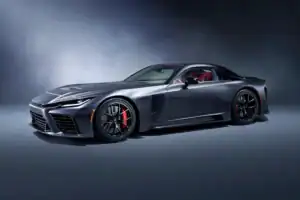Mobile town that never sleeps and serves as safe haven for competitors is a sight to behold.

The Dakar Rally is considered to be the world’s toughest motorsport race. Last week, The Citizen’s Road Test Editor Mark Jones had the rare privilege to spend some time at the race in Saudi Arabia as a special guest of the Toyota Gazoo Racing South Africa team.
The race
Toyota has participated in the Dakar Rally since the very beginning back in 1979, with Toyota Gazoo Racing South Africa first entering the Toyota Hilux in 2012. Initially under the Imperial Toyota name and later under its own.
In the decade prior to 2022 there were several podiums, but only a solitary win (in 2019). The pressure was well and truly on to deliver even better results. Andrew Kirby, President and CEO, Toyota SA made no bones about his expectations for the team when he said: “I expect four cars to finish, three cars in the top 10, and we need to win in 2022.”
And it was if the racing gods were listening because the team and their GR DKR Hilux T1+’s almost ticked every box. Making full use of their new 298kW/700Nm 3.5-litre V6 twin turbo units sourced from the recently launched Land Cruiser 300 they stormed to victory with Nasser Al-Attiyah and co-driver Mathieu Baumel winning the event overall by 27min 46sec. It was Al-Attiyah’s fourth Dakar Rally title.

Giniel de Villiers and Dennis Murphy finished fifth, Shameer Variawa and Danie Stassen 15th and Henk Lategan and Brett Cummings 31st. Had it not been for early setbacks, Lategan could have easily finished in the top 10 as he stormed to two stage wins.
ALSO READ: SA’s Henk Lategan takes maiden Dakar victory
The bivouac
The results are old news by now, but it’s the less reported on behind the scenes stuff that I am talking about today. I got to spend a few days out on the last two stages of the rally and then visiting the team at the bivouac located just outside Bisha in Saudi Arabia.
The bivouac at Dakar is something to truly behold. It is basically a small temporary town that ups and moves wherever it is needed and is also where all the people involved in the Dakar Rally, from the competitors, their crew, the medics, the catering staff and even the media live and use as base.

There are portable toilets, showers, power, parking for 350 organisational vehicles and 1 400 team vehicles, waste management and any other basic facilities that you can think of. And while this translates into around 3 000 people coming and going each day with 8 000 meals being served, don’t be fooled into thinking this is luxury.
Think a buzzing hive of race drivers and riders; race cars, and trucks and bikes spread across one side of 37 acres of sand and harsh stone with support trucks and infrastructure on the other side. The entire area covered with the factory teams, privateers with their country flags flying to the constant hum of generators and race engines being prepped or repaired for the next day’s battles.
It is a bucket list item to experience the cars, trucks and bikes charge through the desert at full speed. Drivers are separated by mere seconds after hundreds of kilometres of hardcore racing in the Dakar Rally.
Sleep is optional in the bivouac, noise is constant, the heat relenting, and fatigue guaranteed. I was grateful to be able to return to the comfort and air-conditioning of our hotel at the end of a long day.

The Dakar Rally is not known as the toughest rally in the world for nothing. Many will enter, but not all will finish, and some will even pay the ultimate price with their lives for chasing the dream of doing something they love.
Run over 14 days, broken down into 12 gruelling stages that cover a full 8 375km of sand, rock and tar under conditions that range from torrential rain and flooding to blistering heat and sandstorms while living in a tent or camper van if you are lucky enough to have one.

The history
The Dakar Rally, which was known as the Paris–Dakar Rally, is an annual rally raid organised by the Amaury Sport Organisation. Most events since the inception in 1978 were staged from Paris in France to Dakar in Senegal, but due to security threats in Mauritania, which led to the cancellation of the 2008 rally, events from 2009 to 2019 were held in South America.
From 2020 to 2022 Saudi Arabia has hosted the race, and from 2023 there are talks that the rally will include other UAE countries. The rally is open to amateur and professional entries, amateurs typically making up about 80% of the participants.
For more information on the Dakar Rally, click here.






